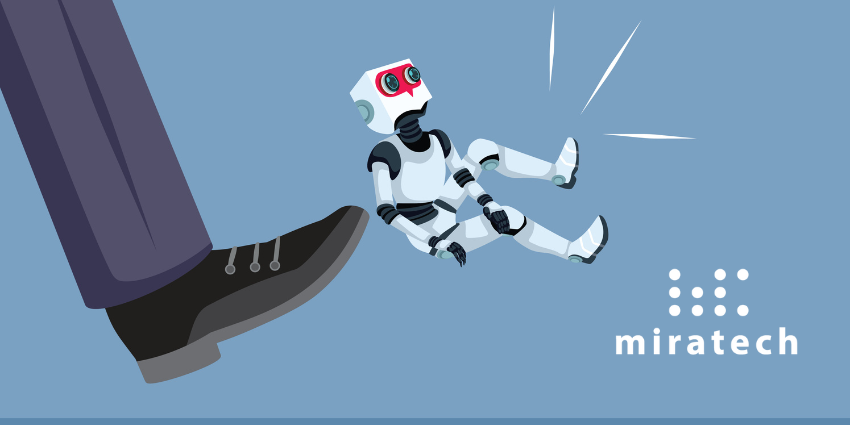For years, retailers have obsessed over search rankings, site speed, and the path from homepage to checkout. But the buyer journey is quietly realigning around a new starting point: conversational AI.
Optimizely’s latest report, AI & The Click-less Customer, surfaces the scale of the shift.
According to its research, 52% of consumers frequently use AI to research products, and 14% now begin their shopping journey on platforms like ChatGPT and Gemini.
For younger shoppers in particular, this isn’t niche behavior; it’s now the default. The study notes that shoppers aged 18-44 are “around three to four times more likely to use AI daily to research products and services than those aged 55 and over.”
Another striking, and arguably worrying, statistic from the report, given the inconsistencies of AI summaries, is that 42% of consumers are willing to trust AI-generated product summaries without clicking through to a website.
If search engines once served as the high street for digital commerce, AI is fast becoming the front door. Brands, however, are largely standing inside, hoping customers still choose to knock.
A Discovery Channel Businesses Don’t Control
As AI tools work their way into shopping behavior, organizations must realize that the starting conditions of the customer journey are very different. Customers now get a summary, not a set of links. They see a shortlist, not a funnel.
In discussing the report, Optimizely’s SVP of Marketing, Tara Corey, captured the stakes clearly:
“AI isn’t just changing how people shop, it’s rewriting the rules of how brands are found.”
“The moment a shopper decides to learn more, they expect instant clarity, trust, and speed. If you’re not visible or ready in that moment, someone else is.”
That immediacy is crucial. AI-generated answers effectively compress discovery, comparison, brand familiarity, and early consideration into a single exchange.
If customers don’t feel compelled to click through, the traditional levers that retailers rely on (UX design, A/B-tested product pages, meticulously crafted landing pages) don’t matter until much later, if at all.
This is why Optimizely highlights the rise of GEO (Generative Engine Optimization) as a new battleground.
Rather than concentrating on ranking, brands need to prioritize representation by featuring accurately in AI summaries, with consistent product data and clear value propositions that AI can interpret and surface.
For Corey, Black Friday reinforces this point, claiming that the shopping holiday “has always been a test of performance. Now it’s a test of discoverability.
“The brands that understand how to show up in AI platforms, not just search engines, will be the ones consumers engage with first.”
ChatGPT Pushes Further into Product Research
The timing for this shift is amplified by OpenAI’s rollout of shopping research in ChatGPT, a feature designed specifically to guide buying decisions.
According to the company, the feature allows users to simply describe what they want with a prompt, such as “Find the quietest cordless stick vacuum for a small apartment”, and ChatGPT will “ask smart clarifying questions, research deeply across the internet, review quality sources, and build… a personalized buyer’s guide in minutes.”
OpenAI claims that the tool “turns product discovery into a conversation,” pulling up-to-date information on price, availability, reviews, specs, and images.
Indeed, the company didn’t mince words about how widespread this behavior already is, stating that “hundreds of millions of people use ChatGPT to find, understand, and compare products.”
The tool is built on a specialized version of GPT-5 mini trained for shopping tasks. It “reads trusted sites, cites reliable sources, and synthesizes information across many sources to produce high-quality product research,” while adjusting recommendations based on user feedback.
It’s also transparent:
“Your chats are never shared with retailers. Results are organic and based on publicly available retail sites.”
With nearly unlimited usage made available across ChatGPT plans for the holiday season, OpenAI has effectively turned its product research feature into a mass-market shopping assistant at the exact moment Black Friday demand peaks.
OpenAI is also narrowing the gap between product discovery and conversion with the introduction of Instant Checkout, a new feature that allows U.S. ChatGPT users to buy items directly within the chatbot.
The rollout begins with Etsy sellers, with Shopify merchants such as Glossier, SKIMS, and Spanx set to follow.
The system currently supports single-item purchases and will expand to multi-item carts and additional regions over time. It’s powered by the open-sourced Agentic Commerce Protocol, developed with Stripe, which enables secure transactions between AI agents, shoppers, and merchants.
Stripe users can activate it with minimal code adjustments, while others can connect through the Shared Payment Token API or the Delegated Payments specification.
For shoppers, the experience is seamless: product recommendations appear organically, payment and shipping details are confirmed inside the chat, and purchases are completed without switching platforms.
Merchants retain full control as the merchant of record, managing payments, fulfillment, returns, and support through their existing systems. OpenAI notes that while sellers pay a small fee on completed transactions, customer pricing remains unchanged.
The Journey No Longer Starts with the Brand
Optimizely’s data shows that 66% of consumers still start on search engines, but AI is eating into that lead quickly.
When AI tools handle product discovery before a brand’s website ever loads, the customer journey begins in a space the brand doesn’t own and can’t directly shape.
And while 45% of marketers say they have a GEO strategy, only 27% feel fully prepared for customers who first encounter them via AI.
That gap is becoming critical. Optimizely’s data from Black Friday 2024 underlines the intensity of peak-season traffic, which sees a 65% increase in website visits, 99.98% uptime, and over 7,400 A/B tests run across the weekend.
These numbers reflect how much brands still rely on their own channels to convert interest into purchase. But if AI increasingly determines whether customers ever reach those channels, discovery could become redundant.
Consumers are already signaling what they trust, with 31% saying they’re more likely to trust an AI-generated summary if it comes from a known brand, and another 31% preferring a mix of brand and product information.
It is clear that right now, the brand still matters – AI just mediates the introduction.
What Retailers Need to Do Next
Across Optimizely’s report, the following three priorities emerged:
1. Structure Product Data for AI, Not Just Search Engines
Optimizely stresses that AI platforms are becoming “the new front door to digital experiences” and that GEO ensures brands “show up accurately in AI-generated answers.”
Accurate and accessible product data is foundational for that.
2. Treat AI Summaries as an Extension of Your Brand
Optimizely notes consumers will often trust AI summaries without clicking, and trust increases when information comes from a brand they know.
This implies brands must manage how they appear inside AI answers – which is the core of GEO.
3. Prepare Your Site for Late-Stage Arrivals
The concept fits the report’s narrative: customers come to a brand’s site later, after AI does the early filtering.
Optimizely also highlights the need for site performance during peak loads (traffic surges, uptime, speed).
A New Era of Shopping Behavior
ChatGPT’s new feature doesn’t replace retail websites, but it reshapes their role. They’re no longer hubs for early research; they’re destinations customers reach after an AI-guided shortcut.
AI is removing friction from the top of the funnel, but it’s also removing brand influence. The brands that adapt quickly will treat conversational AI as the new storefront, not a secondary channel.
And the next generation of shoppers is already there.







